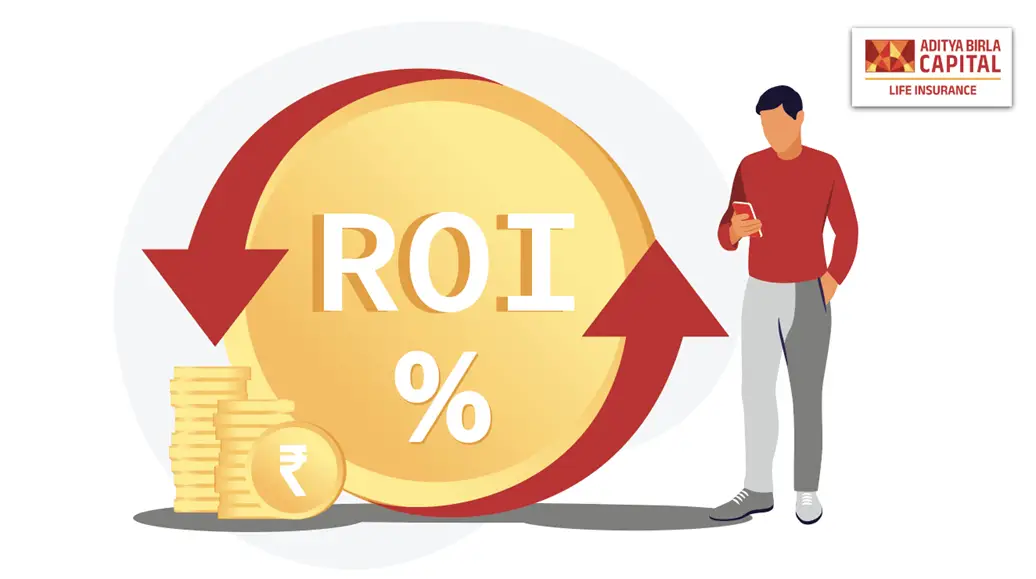ROI: How to Calculate Return on Investment – A Complete Guide

Plan Smarter, Live Better!


- Table of Contents
FAQs
Return on Investment (ROI) is a financial metric used to evaluate the efficiency or profitability of an investment. It's a ratio that compares the net profit of an investment to its cost. A high ROI indicates that the investment gains compare favourably to its cost.
The formula for calculating ROI is ROI = (Net Profit / Cost of Investment) x 100%. Net Profit refers to the gain from the investment minus the cost of the investment, and Cost of Investment is the total outlay of money made for the investment.
To calculate the ROI for your investment, you need to subtract the cost of the investment from the gains obtained, divide the result by the cost of the investment, and then multiply by 100 to get the percentage.
A positive ROI indicates a profitable investment, meaning that the returns or gains from the investment are higher than the cost of the investment. Conversely, a negative ROI signifies that the costs have exceeded the gains.
Yes, ROI is a versatile financial metric that can be used across various domains, such as stocks, bonds, real estate, and even business ventures or projects.
In general, a higher ROI means the investment gains are greater relative to its cost. However, it's also essential to consider other factors such as risk, time frame, and the nature of returns (capital gain or income yield).
ROI is important because it provides a simple, straightforward metric for comparing the profitability of different investments. It helps investors to make informed decisions and to choose investment avenues that are likely to provide the best returns relative to cost.
Yes, while ROI is a useful tool, it has limitations. It does not account for the time duration of an investment or the risk associated with it. Also, the accuracy of ROI calculations heavily depends on the accuracy of the figures used for the net profit and cost of investment.
Yes, ROI can help compare the profitability of different investment options. However, it shouldn't be the only criterion. Other factors such as your financial goals, risk tolerance, investment horizon, and market conditions should also be considered.
If you need help calculating ROI or making investment decisions, consider consulting with a financial advisor. They can provide expert guidance tailored to your financial situation and goals.
Get immediate income payout after 1 day of policy issuance^
ABSLI Nishchit Aayush Plan
Guaranteed# Income
Life Cover across policy term
Lumpsum Benefit at policy maturity.
Get:
₹33.74 lakhs~
Pay:
₹10K/month for 10 years
Most Popular Calculator
ADV/6/24-25/686







